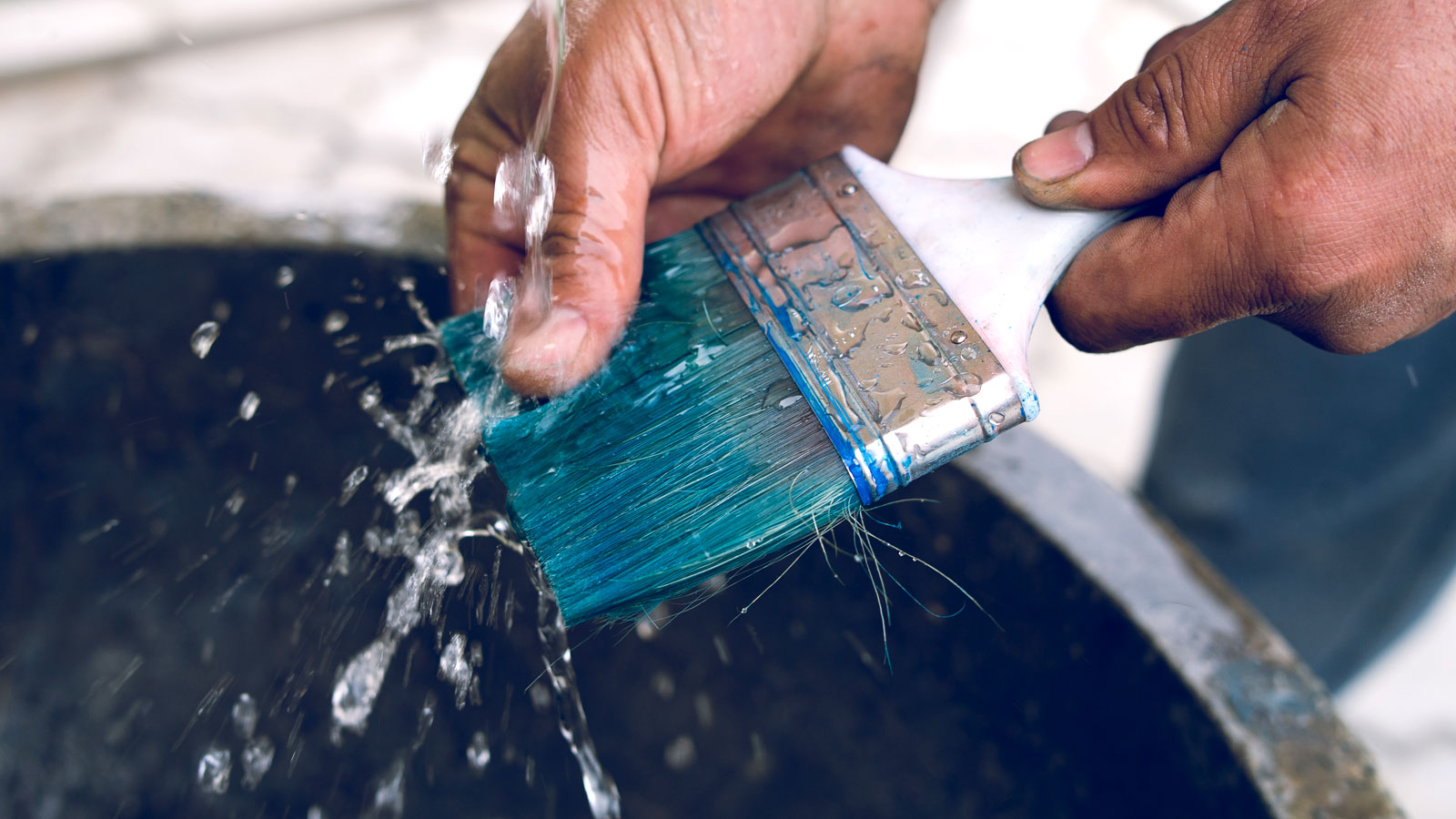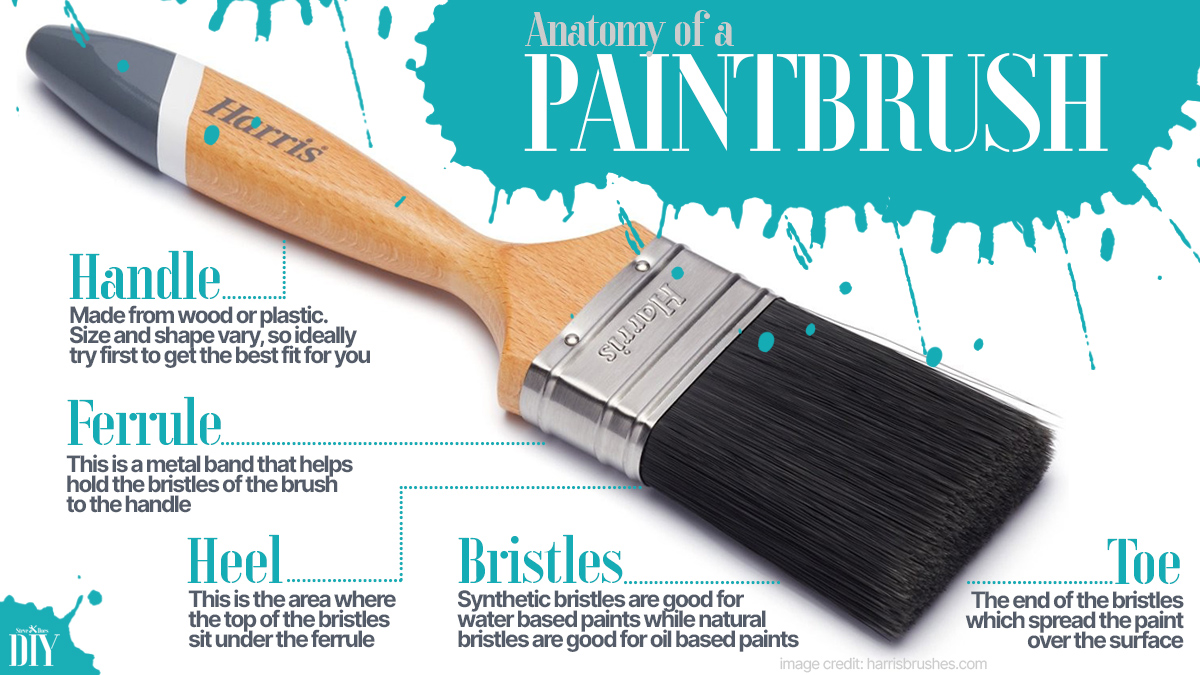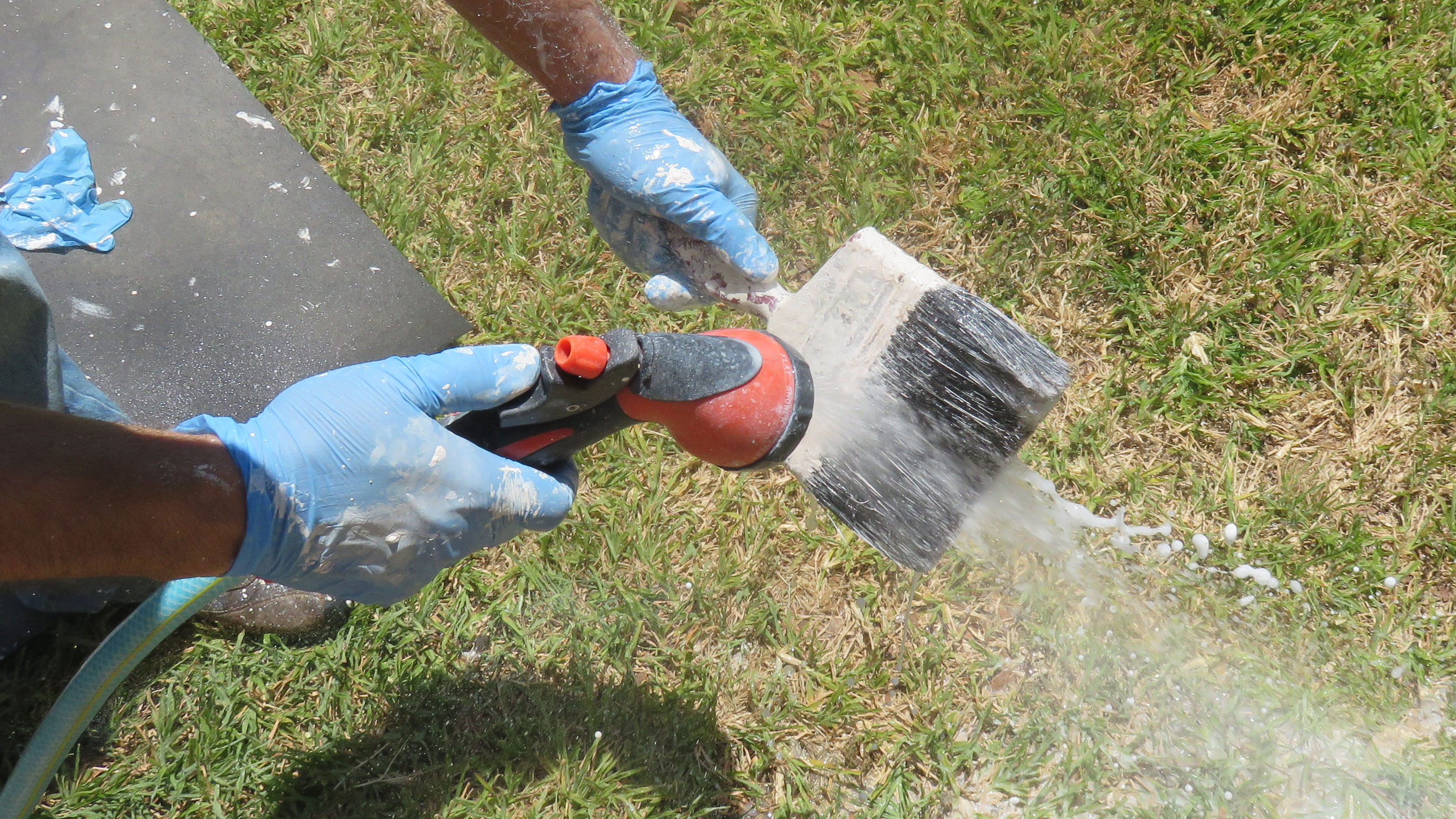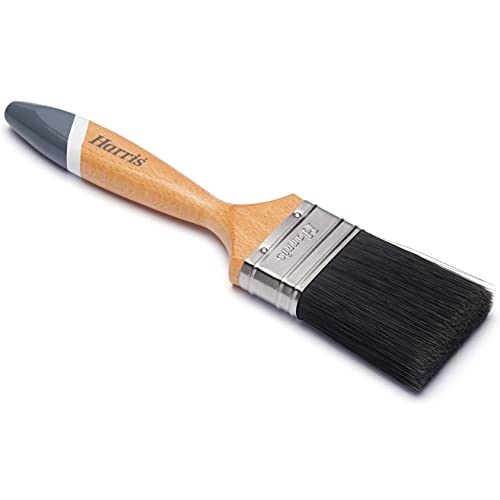Fed up of gloss paintbrushes feeling stiff and sticky? Follow this simple guide to cleaning them and they'll feel like new
Wondering how to clean gloss paintbrushes? Here we give you the lowdown on how to clean water-based and oil-based paints to keep your brushes in top condition

It’s simple, when you finish painting, you need to clean your paintbrushes. Do a poor job and your paintbrushes won’t last long. Paint will clog up the bristles under the ferrule, stiffening the bristles and making it more difficult to get smooth strokes on a surface.
And, when painting wood such as doors, windows, and trim, it's essential to maintain a constant flow of paint to achieve a smooth, professional-looking finish – after all, you don’t want to be struggling to add paint while picking out old, dry paint from your freshly finished woodwork.
But, some paints are trickier to clean than others, particularly gloss paint, which is why understanding how to clean gloss paint brushes can require a little more time and attention. However, with these these easy-to-follow tips on cleaning both water and oil-based gloss paint from your brushes you'll have them looking new in no time at all.

How to clean gloss paintbrushes: water-based paint
Water-based gloss is much easier to clean that oil-based gloss paint. Follow these quick steps to keep your brushes clean:
1. Remove excess paint
The first step is to remove the gloss paint from the paintbrush. Nick Parsons, Technical Manager at Harris, says, "remove as much paint as possible from the brush using a paper towel. When painting with water-based paints, use a mild soap and water to remove paint residue from the bristles."
2. Wash with water
Hold the paintbrush under a running tap – bristles down - for around 30 seconds to remove most of the paint. Nick Parsons says, "a cool water temperature is suitable for most water paints. But, "avoid using harsh solvents or cleaners," he adds. "These can damage the bristles and affect the brush's performance."
Now massage the bristles with your fingers and thumb to remove more paint. If you have a paintbrush cleaning tool (like this GoodHome Paint brush & roller Cleaning tool from B&Q), use this to finish. If you don't have one, consider investing in one; they are inexpensive and extremely useful for getting a good, clean brush.
Bring your dream home to life with expert advice, how to guides and design inspiration. Sign up for our newsletter and get two free tickets to a Homebuilding & Renovating Show near you.
3. Spin dry
Once the brush is clean you need to get rid of as much water as possible. First squeeze with your hand and wipe with a cloth. If you have an outside space, hold the brush and flick your wrist a few times to get rid of the water. If you are restricted for space, get an empty container – similar in size to a paint tin – put the handle between the palms of your hands and move in a rubbing motion to spin the paintbrush dry.
4. Store flat
Now lay flat to completely dry out. When throughly dry, wrap in newspaper or in the sleeve your brush came with when you bought it. But if you don't want to do a complete clean, because you are going to use the brush again later, Nick Parsons offers a tip. "Simply lightly load the brush or roller with paint then cover with an airtight wrap such as clingfilm if you are leaving them for longer than 20 minutes. "
Try these brushes and cleaning kit

Nick began his time with Harris in 1988, and throughout the decades has worked in various departments. His experience and product understanding inform the evolution of all Harris products, from benchmarking to insight, research and development.
How to clean oil-based gloss paint from paintbrushes
1. Add solvent
Follow the first step in the water based method and remove as much paint as possible. Nick Parsons says, "for oil-based paints such as gloss, satin or eggshell, a specialist cleaner will be required to remove paint from any brush," suggesting "always refer to the paint tin for further guidance."
Fill a container that is just bigger than the paintbrush – a jam jar is a good choice for brushes up to three inches – with brush cleaner. Alternatively, use a paint kettle.
2. Loosen paint
Stir the brush for around 30 seconds in the solvent to loosen the paint. Take out the paintbrush and squeeze in a cloth and repeat. Alternatively, you can leave the brush in the solvent and clean it later.
3. Massage bristles
To make sure that you have all the paint and solvent removed from the brush, fill a container with warm soapy water and massage the bristles with your hands. Remove and rinse under a tap until the water is clear.
4. Flick and spin
Now, flick or spin the paintbrush dry to remove the water, and then leave it to dry. Don’t forget to store flat, or alternatively, hang if your paintbrush has a hanging hole in the handle.
If you are using a roller to apply a gloss paint you need to know how to clean paint rollers. The process and tools are very similar to cleaning a paintbrush whether your using a water or oil-based paint.
FAQs
Can I wash paintbrushes in the sink?
Yes and no. If the sink you are going to use is situated in your kitchen and surrounded by items you don’t want splashed with paint, you have two options. Clean your brushes outside, or get a waterproof sheet and cover the surrounding areas and floor.
This is especially pertinent if you are washing oil-based gloss paintbrushes that have been used for painting windows or doors. You will need to use a paint cleaner or some type of solvent, which can pollute the water system. Keep the used solvent in a household jar or container and reuse it. Dispose of properly when finished; check with your local council for disposal instructions.
Additionally, oil-based paints can leave a paint wash over the sink, which needs to be cleaned immediately to maintain the sink's original condition.
Can I use a hose to clean paint brushes?
If you are using a water-based paint and have an outdoor space where you clean your gloss paintbrushes, a hose is a good idea. First remove as much paint as you can by wiping your paint brush on a cloth or newspaper.
Then hold the brush down and away from you – and over an area where you don’t mind getting paint wash – and start spraying. Alternatively, spray into a large container – an empty emulsion container or bucket are good choices – to help. Keep going until the water runs clear then shake dry.

How do I store gloss brushes overnight?
If you plan to use your gloss brushes the next day, you can save yourself some time and effort by storing them ready for action when needed. First, remove as much paint as possible.
Wipe on the side of a tin or paint kettle, then get a clean cloth or rag and squeeze out the remaining paint. Now wrap the ferrule and bristles tightly in cling film and lay flat somewhere out of the way. Alternatively, get a plastic bag and an elastic band and secure tightly around the ferrule and bristles.
Be careful not to drop your paintbrush when squeezing out the paint. Do it over a dust sheet or similar, but if you do drop paint, you will need to know how to get paint off carpet or floor. One tip is to clean as soon as possible with water or a solvent, depending on the type of paint you are using.
Gloss paint has a different mix to other paints. To know how different paints differ when applied, check out our how long does paint take to dry, and to make sure it stays in good condition, check out our storing paint guide.
Steve Jenkins is a freelance content creator with over two decades of experience working in digital and print and was previously the DIY content editor for Homebuilding & Renovating.
He is a keen DIYer with over 20 years of experience in transforming and renovating the many homes he has lived in. He specialises in painting and decorating, but has a wide range of skills gleaned from working in the building trade for around 10 years and spending time at night school learning how to plaster and plumb.
He has fitted kitchens, tiled bathrooms and kitchens, laid many floors, built partition walls, plastered walls, plumbed in bathrooms, worked on loft conversions and much more. And when he's not sure how to tackle a DIY project he has a wide network of friends – including plumbers, gas engineers, tilers, carpenters, painters and decorators, electricians and builders – in the trade to call upon.




